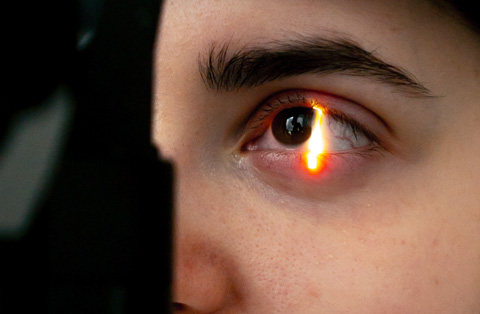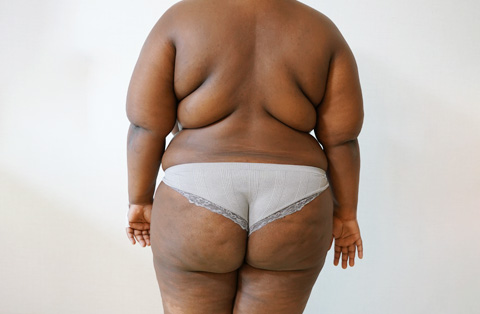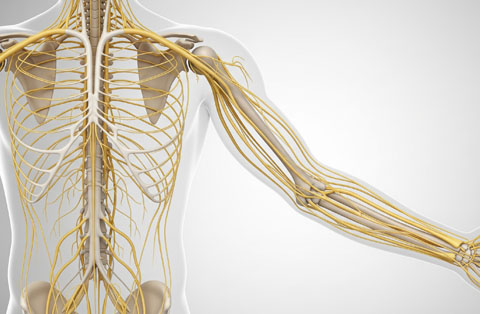The journey of aging is an inevitable part of life, and it often manifests on our skin, particularly around the eyes. As we age, eyelid wrinkles may start to develop. They can impact your look, make you feel less confident, and sometimes even hinder vision.
This comprehensive guide will walk you through everything you need to know about eyelid wrinkles, including the causes, prevention strategies, and treatment options available. Whether you’re dealing with wrinkles on your eyelids now or want to be prepared for what’s to come, this guide is your starting point.
Signs of Aging Around the Eyes
The skin around our eyes is extremely delicate and often the first area to show signs of aging. These signs can include:
- Crow’s feet: These are the small lines that branch out from the corners of your eyes.
- Under-eye wrinkles: These appear as fine lines beneath the eyes and can deepen over time.
- Eyelid wrinkles: These are fine to deep lines that occur on the upper and lower eyelids.
- Sagging skin: As collagen decreases, the skin around the eyes can begin to droop.
- Under-eye bags or dark circles: Fluid retention or thinning skin can cause puffiness and darkening under the eyes.
- Hollowing: Loss of fat under the eyes can lead to a sunken appearance.
What Causes Eyelid Wrinkles?
Understanding the causes of eyelid wrinkles is key to prevention and treatment. Factors leading to eyelid wrinkles include:
- Aging: As we age, our skin loses elasticity and becomes thinner, leading to the formation of wrinkles.
- Sun exposure: Prolonged sun exposure can cause damage to the skin and accelerate the aging process.
- Smoking: Tobacco smoke contains toxins that can lead to premature aging of the skin, including around the eyes.
- Repetitive facial expressions: Regularly squinting, frowning, or smiling can contribute to the formation of wrinkles around the eyes.
- Poor nutrition: A diet lacking in essential nutrients and antioxidants can adversely affect the skin’s health and elasticity.
- Dehydration: Lack of adequate hydration can lead to dry skin, which is more prone to wrinkling.
Risk factors that worsen wrinkles
Several factors can worsen existing wrinkles or expedite the formation of new ones. These include:
- Excessive sun exposure without proper protection.
- Unhealthy lifestyle habits such as smoking and excessive alcohol consumption.
- Poor sleep patterns.
- Chronic stress.
- Inadequate skincare routine.
Additional Skin Concerns Around the Eyes
Alongside wrinkles, there are various other skin issues that can affect the eye area:
Dark circles:
These are often a result of thinning skin and loss of fat and collagen, which makes the reddish-blue blood vessels under your eyes more noticeable. They can also be caused by excessive pigmentation, allergies, and lack of sleep.
Puffy eyes:
This issue is usually due to fluid retention, allergies, sinus problems, or lack of sleep. Aging also plays a role, as the tissues around your eyes, including some of the muscles supporting your eyelids, weaken, causing fat to accumulate below and lead to swelling.
Crow’s feet:
These are the fine lines and wrinkles that form at the outer corners of your eyes, often a result of sun exposure and the natural aging process.
Ptosis (Droopy Eyelids):
This is often caused by aging, but can also occur due to a medical condition. Ptosis can affect one or both eyes, and the severity can range from barely noticeable to completely covering the pupil.
Milia:
These are small, bump-like cysts found under the skin. They form when skin flakes or keratin, a protein, become trapped under the surface of the skin.
Dermatochalasis:
This is an excess of skin in either the upper or lower eyelid. It’s usually a result of aging and may cause irritation, difficulty with peripheral vision, and an “aged” appearance.
Xanthelasma:
These are yellowish deposits of fat underneath the skin, often on or around the eyelids. They’re not harmful or painful but might be a sign of a more serious condition, such as heart disease.
What causes your eyes to look different as you age?
As we age, changes in our facial structure and skin quality can impact the appearance of our eyes. Some of the most common changes include:
- Loss of volume: Aging leads to the loss of fat in the face, which can lead to a hollowed look around the eyes.
- Decreased skin elasticity: The production of collagen and elastin decreases with age, causing the skin to lose its firmness and bounce back.
- Drooping eyebrows: With time, gravity and loss of skin elasticity can lead to a downward shift of the eyebrows, altering the appearance of the eyes.
- Changes in the eye shape: Changes in the structures around the eye, including the orbital bone, can alter the shape of the eyes over time.
How to prevent eyelid wrinkles?
Preventing or delaying the formation of eyelid wrinkles is possible with the right care and lifestyle changes:
- Protect your skin from the sun: Wear sunglasses and apply a broad-spectrum sunscreen daily.
- Stay hydrated: Drink plenty of water and use a good quality eye cream to keep your skin moisturized.
- Maintain a healthy lifestyle: Eat a balanced diet rich in antioxidants, quit smoking, limit alcohol intake, and get regular exercise.
- Take care of your skin: Regularly cleanse, exfoliate, and moisturize your skin. Use products that contain retinol, vitamin C, and other skin-friendly ingredients.
- Get enough sleep: Aim for 7-9 hours of sleep per night to give your skin time to renew and repair.
Is it possible to get rid of upper eyelid wrinkles non-invasively?
Yes, it is possible to minimize the appearance of upper eyelid wrinkles non-invasively, although results can vary depending on the individual’s skin type, age, and overall health. Non-invasive treatments typically aim to stimulate collagen production, improve skin elasticity, and rejuvenate the skin surface. Here are a few non-invasive treatment options:
- Topical Creams and Serums: Anti-aging skincare products often contain ingredients like retinol, peptides, and antioxidants, which can help reduce the appearance of wrinkles and fine lines. Consistent use over time can improve skin texture and elasticity, leading to a reduction in eyelid wrinkles.
- Laser Treatments: Non-ablative laser treatments can stimulate collagen production in the skin without causing significant damage. This can help to reduce wrinkles and give the skin a more youthful appearance.
- Radiofrequency Treatments: This technique uses energy waves to heat the deep layer of your skin, known as the dermis. This heat stimulates the production of collagen, which can reduce wrinkles and lines.
- Micro-Needling: This procedure involves using a device that creates tiny punctures in the skin, stimulating the skin’s healing response and increasing collagen and elastin production.
- Chemical Peels: By removing the outermost layers of the skin, chemical peels can help to reduce the appearance of fine lines and wrinkles, including those on the upper eyelids.
Remember, it’s important to consult with a Plastic Surgeon before starting any new treatment regimen, as they can guide you to the most suitable option for your individual needs. And while these non-invasive options can help to reduce the appearance of wrinkles, they may not be able to completely eliminate them, especially if the wrinkles are deep or caused by significant skin sagging.
Related Surgical Treatments for Eyelid Wrinkles
- Blepharoplasty (Eyelid Surgery)
- Brow Lift
- Facelift
In more severe cases, surgical treatments such as blepharoplasty (eyelid surgery) or a brow lift may be recommended to reduce the appearance of eyelid wrinkles. These procedures can significantly improve the appearance of the eye area by removing excess skin and repositioning underlying tissues and muscles.
Which Treatment Option Is Best for Me?
Choosing the right treatment depends on the severity of your wrinkles, your overall health, and your personal preferences. Consultation with a plastic surgeon will provide you with the most suitable treatment options based on your individual needs and circumstances.
Before and After Pictures

Our patient was experiencing major sagginess on her upper eyelids. This was not only affecting her aesthetically, it was also impairing her vision. She opted for an upper and lower eyelid blepharoplasty in Turkey to experience a huge transformation.
Before and after pictures are a great way to visualize the potential results of various treatments. They can provide you with a realistic expectation of what can be achieved with each treatment option. Always ask your doctor to show you before and after pictures of their previous patients who underwent the same procedure you’re considering.
Conclusion
Dealing with eyelid wrinkles can be a challenging aspect of aging, but the good news is that with advances in cosmetic surgery, we now have a wide range of treatment options. Surgical treatments have been shown to be effective in reducing the appearance of wrinkles and achieving a more youthful look.
Whether you’re interested in preventive measures or seeking a treatment for existing wrinkles, it’s vital to remember that everyone’s skin and body are different. What works well for one person may not work as effectively for another. That’s why it’s so important to speak with an expert who can guide you in selecting the most suitable treatment based on your unique needs and goals.
Eyelid wrinkles should not deter you from feeling comfortable and confident in your own skin. With the right guidance, it’s entirely possible to minimize their appearance or even get rid of them. A world of possibilities awaits you.
Remember, every journey starts with a single step. Don’t wait for the wrinkles to set in deeper. Reach out to us today, and let’s start working towards a younger-looking you. Feel free to visit our contact page and schedule your consultation. We are excited to be a part of your journey towards rejuvenation and self-confidence!






